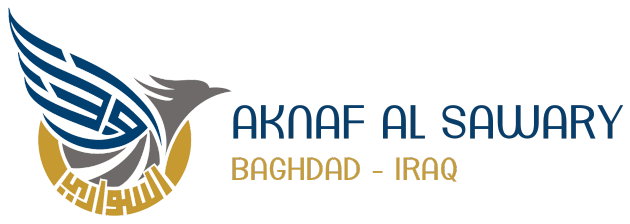Understanding the diverse Iraq ethnic groups is essential for appreciating the rich cultural mosaic that defines the nation. The Iraq people, with their unique traditions and histories, contribute to a vibrant and multifaceted society. Despite historical and ongoing challenges, the coexistence of these diverse groups in the Iraq population continues to shape Iraq’s cultural landscape, offering a rich tapestry of heritage and tradition for visitors and residents alike.
This land of rich diversity, with various ethnic and religious groups in Iraq contributing to its unique cultural and social fabric. Understanding Iraq’s ethnic groups is essential for appreciating the country’s complex history and vibrant culture. This article explores the major and minor ethnic groups in Iraq, their historical backgrounds, and their contributions to the nation.
Iraq Ethnic Groups
Here is a table showcasing the population of different ethnicities in Iraq, along with their approximate numbers and predominant religions:
| Ethnicity | Population (Approximate) | Religion |
|---|---|---|
| Arabs | 30,000,000 | Islam (Sunni and Shia) |
| Kurds | 8,000,000 | Islam (Sunni, Shia) |
| Turkmen | 1,000,000 | Islam (Sunni, Shia) |
| Assyrians | 300,000 | Christianity |
| Yazidis | 500,000 | Yazidism |
| Shabaks | 250,000 | Islam (Shia) |
| Armenians | 10,000 | Christianity |
| Mandaeans | 3,000 | Mandaeism |
| Circassians | 20,000 | Islam (Sunni) |
| Persians | 100,000 | Islam (Shia) |
This table provides an overview of the various ethnic groups in Iraq, their approximate population numbers, and the primary religions they practice. Iraq people and their ethnic diversity is a vital aspect of its identity, contributing to its rich cultural heritage. Managing the diverse Iraq population presents both challenges and opportunities. Ensuring equitable development, fostering social cohesion, and addressing the needs of minority groups are critical for the country’s stability and growth. The population of Iraq and its density in urban areas also calls for improved infrastructure and services to support the growing numbers.
Major Ethnic Groups in Iraq
Arabs
- Origin: Indigenous to the Arabian Peninsula
- Approximate Number: ~30 million
- Areas Inhabited: Central and Southern Iraq
- Major Cities: Baghdad, Basra, Karbala, Najaf
- Languages Spoken: Arabic (Standard, Mesopotamian dialects)
- Main Economic Areas: Government, trade, agriculture, oil industry
Kurds
- Origin: Indigenous to the mountainous regions of Western Asia
- Approximate Number: ~8 million
- Areas Inhabited: Northern Iraq (Iraqi Kurdistan)
- Major Cities: Erbil, Sulaymaniyah, Dohuk
- Languages Spoken: Kurdish (Sorani, Kurmanji)
- Main Economic Areas: Agriculture, trade, government, oil industry
Turkmen
- Origin: Descendants of Turkic peoples from Central Asia
- Approximate Number: ~1 million
- Areas Inhabited: Northern Iraq
- Major Cities: Kirkuk, Erbil, Mosul
- Languages Spoken: Turkmen, Arabic, Kurdish
- Main Economic Areas: Agriculture, trade, local industries
Minority Ethnic Groups in Iraq
Assyrians
- Origin: Indigenous to Mesopotamia, descendants of ancient Assyrians
- Approximate Number: ~300,000
- Areas Inhabited: Northern Iraq (Nineveh Plains)
- Major Cities: Mosul, Dohuk, Erbil
- Languages Spoken: Assyrian Neo-Aramaic
- Main Economic Areas: Trade, agriculture, local industries
Yazidis
- Origin: Indigenous to the Sinjar Mountains
- Approximate Number: ~500,000
- Areas Inhabited: Northern Iraq (Sinjar)
- Major Cities: Sinjar, Dohuk
- Languages Spoken: Kurmanji Kurdish
- Main Economic Areas: Agriculture, animal husbandry
Mandaeans
- Origin: Indigenous to the marshlands of Southern Iraq
- Approximate Number: ~3,000
- Areas Inhabited: Southern Iraq (Basra)
- Major Cities: Basra
- Languages Spoken: Mandaic Aramaic
- Main Economic Areas: Jewelry making, trade
Shabaks
- Origin: Indigenous to Northern Iraq
- Approximate Number: ~250,000
- Areas Inhabited: Nineveh Plains
- Major Cities: Mosul
- Languages Spoken: Shabaki, Arabic, Kurdish
- Main Economic Areas: Agriculture, local crafts
Armenians
- Origin: Descendants of Armenian migrants and refugees
- Approximate Number: ~10,000
- Areas Inhabited: Urban areas in Northern and Central Iraq
- Major Cities: Baghdad, Mosul, Basra
- Languages Spoken: Armenian, Arabic
- Main Economic Areas: Trade, crafts, services
Persians
- Origin: Descendants of Persian settlers
- Approximate Number: ~100,000
- Areas Inhabited: Urban areas in Central and Southern Iraq
- Major Cities: Baghdad, Basra
- Languages Spoken: Persian, Arabic
- Main Economic Areas: Trade, services
Circassians
- Origin: Descendants of Circassian migrants
- Approximate Number: ~20,000
- Areas Inhabited: Urban areas in Northern Iraq
- Major Cities: Mosul, Erbil
- Languages Spoken: Circassian, Arabic
- Main Economic Areas: Agriculture, trade
Iraq Population
The Iraq population is estimated to be around 41 million people. This diverse demographic includes various ethnicities and religious beliefs, contributing to Iraq’s multifaceted identity. The Iraq population Sunni and Iraq Christian population are notable religious minorities. Sunni Muslims comprise about 30-35% of the Iraq population, primarily residing in the central and western regions of Iraq. The Iraq Christian population, although smaller, remains an integral part of the country’s religious landscape, predominantly found in cities like Baghdad, Mosul, and Erbil.
Population Distribution and Density
- Iraq total population: Approximately 41 million
- Iraq population density: Varies significantly, with urban areas like Baghdad, Basra, and Mosul being densely populated, while rural areas in the western deserts and northern mountains have much lower population densities.
- Erbil Iraq population: Approximately 1.5 million, reflecting its importance as a cultural and political hub for the Kurds.
Iraq People
Iraq’s ethnic composition has been shaped by millennia of history, marked by the rise and fall of empires, invasions, and migrations. The diverse ethnic groups have coexisted and influenced each other culturally and linguistically. The region’s history is a tapestry of Mesopotamian civilizations, Islamic caliphates, Ottoman rule, and modern statehood.
Major Conflicts
The historical background of Iraq’s ethnic groups includes several significant conflicts, such as the Kurdish Rebellions, Shia-Sunni Sectarian Conflict, and the Yazidi Genocide by ISIS. These conflicts have had profound impacts on the country’s demographic and cultural landscape.
Conclusion
Understanding the diverse ethnic groups in Iraq is essential for appreciating the rich cultural mosaic that defines the nation. The Iraq people, with their unique traditions and histories, contribute to a vibrant and multifaceted society. Despite historical and ongoing challenges, the coexistence of these diverse groups continues to shape Iraq’s cultural landscape, offering a rich tapestry of heritage and tradition for visitors and residents alike.



